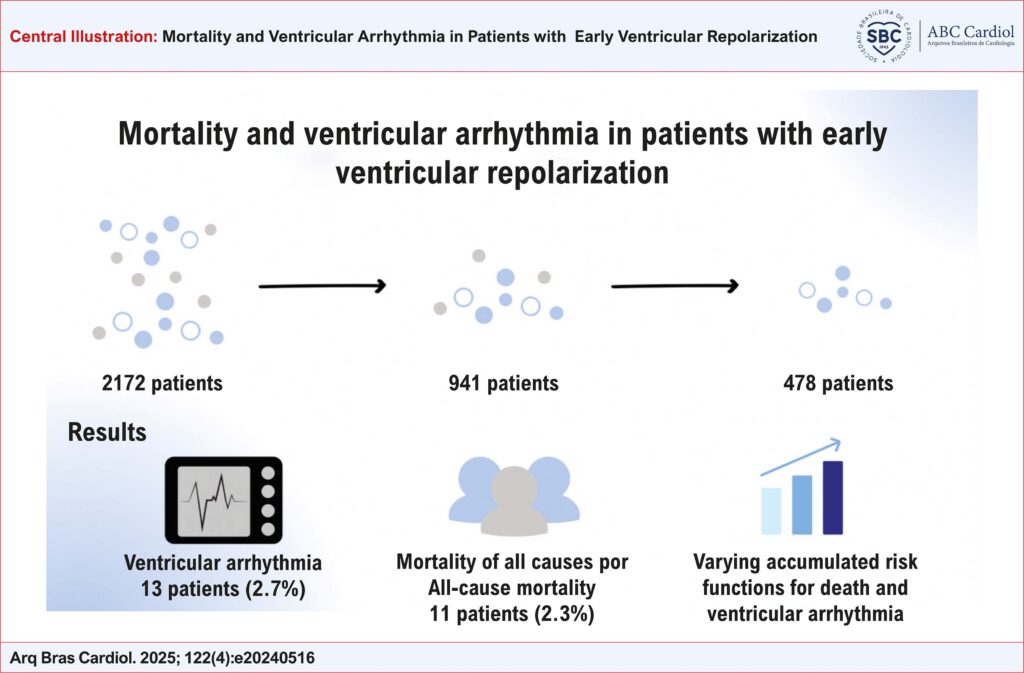Arq. Bras. Cardiol. 2025; 122(4): e20240516
Mortality and Ventricular Arrhythmia in Patients with Early Ventricular Repolarization
This Original Article is referred by the Short Editorial "Does Early Repolarization Affect the Risk of Death and Ventricular Arrhythmias?".
Abstract
Background
Recent research has linked early repolarization (ER) with increased ventricular fibrillation risk, especially in leads V1-V3 and in inferior and lateral regions. However, data on the Brazilian population are limited.
Objective
To estimate the impact of ER on survival and the occurrence of ventricular arrhythmias (VA) in patients over a 10-year period at a university hospital.
Methods
This retrospective cohort study included patients with ER on electrocardiogram from the hospital database. Descriptive analysis was conducted to describe patients’ profile and characteristics. Kaplan-Meier method was utilized to analyze survival curves, with the log-rank test employed to assess differences between ER types. Cox regression models were applied to evaluate the risks of death and VA, calculating both gross and adjusted hazard ratios. The level of significance adopted in the statistical analysis was 5%.
Results
The study population was predominantly male, average age of 45.6 years; 2.7% experienced VA (five in the group with lateral ER, four in the group with inferior ER group, and four in the ER inferolateral group). Significant differences were observed in age, sex, and HFrEF between the groups. Regarding all-cause mortality, 2.3% of patients died (five in the group with lateral ER, one in the group with inferior ER group, and five in the ER inferolateral group). Only age showed a statistically significant difference. There were significant differences in both death and VA between the groups (p=0.7 and p=0.5, respectively).
Conclusion
ER did not lead to a higher incidence of VA or all-cause mortality in this cohort.
401

